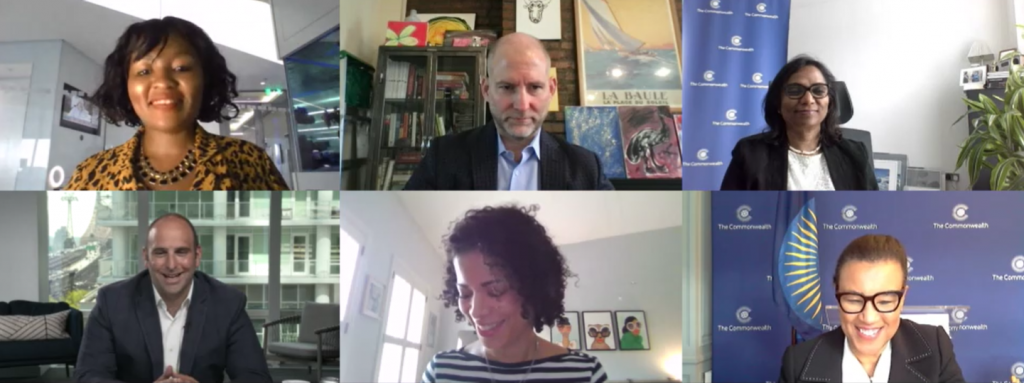Building Resilience: How Bloomberg is Partnering with the Commonwealth to Support Nations Vulnerable to Natural Disasters

Natural disasters can take many forms and, as communities around the world know, predicting how, when or where a disaster may strike can be incredibly challenging.
Thankfully, technological advancements and the introduction of new early warning systems have improved our ability to predict natural disasters. Such advancements offer communities a vital opportunity to ready themselves before a disaster strikes. However, unless officials utilize this advanced insight and develop pre-emptive procedures, any post-disaster response will likely be hampered by indecision, disagreement, and ineffective action.
That’s why the Commonwealth Secretariat — the administrative arm of the Commonwealth, an association of 54 countries that is home to 2.4 billion people — and Bloomberg Philanthropies have collaborated to release the Disaster Resilience Taskforce Toolkit.
The Toolkit will help governments assess the resilience of their preparedness procedures, provide structures which can be implemented during a crisis, and help authorities analyze the effectiveness of their actions post-disaster. It is specifically targeted at helping prepare and strengthen the systems of small and vulnerable nations, and focuses on critical areas including risk and damage assessment; management and personnel; recovery; and rebuilding tools and sustainability efforts.
This continues a partnership since 2018 between Bloomberg and the Commonwealth Secretariat to support more inclusive economic development, facilitate innovation, support resilience, and protect our oceans.
The Rt Hon Patricia Scotland Scotland, Secretary-General of the Commonwealth said: “This collaboration builds upon the now well-established partnership between the Commonwealth Secretariat and Bloomberg Philanthropies. The Toolkit offers a new and unique perspective providing adaptable strategies which can be customized to fit the specific needs of individual Commonwealth member countries.”
“Carefully evaluating the full impact of disasters is key to improving our response,” said Jarrod Bernstein, Disaster Response, Recovery and Resilience Operations at Bloomberg LP. “This Toolkit will help countries across the Commonwealth analyze the way systems, policy, and procedures perform in times of crisis and apply proven methodologies to support recovery and the wellbeing of citizens.”
The Toolkit was born out of deep experience gained by Bloomberg in the immediate aftermath of Hurricane Sandy, which hit New York in 2012, and Hurricanes Irma and Maria, which hit the U.S. Virgin Islands in 2017. As part of Mike Bloomberg’s mayoral team in New York City Hall, and later as part of Bloomberg Associates’ Sustainability Practice, the team undertook a detailed assessment of the systems and procedures which could be improved or enhanced to help officials better prepare and respond to future natural disasters. These include improvements to long-term infrastructure and public service delivery, and steps to make businesses and local communities more adaptive and resilient.
“The issue of resilience has become one that literally every country in the world has had to start thinking about,” said Kevin Sheekey, Global Head of External Relations at Bloomberg LP. “While the original inspiration for the Toolkit was climate disasters, the process can address resilience from any type of hazard. Under Baroness Scotland’s leadership, the Commonwealth has placed increased importance on helping member states prepare for and respond to climate emergencies. We’re delighted to work with the Commonwealth to think through and better prepare for the natural disasters that inevitably lie ahead.”
Unquestionably, the need for such a toolkit has only become more pressing as the climate emergency continues to disproportionally impact smaller island nations. Island nations are particularly vulnerable to coastal floods, and the Toolkit includes details on how to build coastal flood models to help identify how much land will flood for a particular storm, including methods of factoring in changing sea levels.
“Island communities face increasing and unique risks from natural disasters and climate change,” said Adam Freed, Principal for Sustainability at Bloomberg Associates. “The Disaster Resilience Toolkit offers a flexible planning process for governments to not only build a robust disaster response infrastructure before a crisis arrives, but to develop stronger, more resilient communities.”
The Toolkit draws on the combined expertise of Bloomberg Philanthropies on the environment and Bloomberg LP on data to provide smaller island states in particular with easy-to-replicate templates, including sample budgets and risk assessment matrixes that can be adapted and implemented with minimal financial investment.
As states turn to post-COVID recovery, the need for a coordinated approach that puts long-term disaster resiliency at the center is increasingly vital.